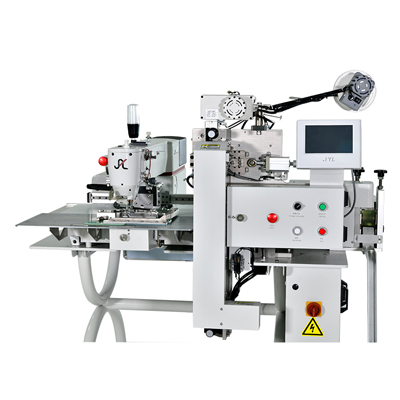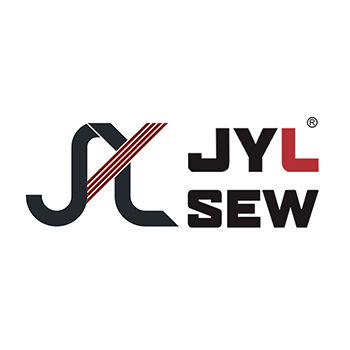Maintaining and caring for an "Automatic Hole Punching BarTacking Sewing Machine" is essential to ensure its optimal performance, extend its lifespan, and minimize downtime. Regular maintenance helps prevent issues, reduces the risk of malfunctions, and contributes to the overall efficiency of the machine. Below is a comprehensive guide on how to maintain and care for an Automatic Hole Punching BarTacking Sewing Machine:

Daily Maintenance:
Clean the Machine:
Use a soft brush or a vacuum cleaner with a nozzle attachment to remove dust, lint, and debris from the machine.
Clean the bobbin case and surrounding areas.
Wipe down the machine with a clean, dry cloth to remove any accumulated dirt.
Oil the Machine:
Refer to the machine's user manual for the recommended oiling points.
Apply a few drops of Sewing Machine oil to lubricate moving parts such as the needle bar, presser foot bar, and feed dog.
Ensure that the oil used is suitable for Sewing Machines.
Check the Tension:
Inspect the thread tension regularly to ensure it is correctly adjusted.
Make adjustments as needed based on the fabric and thread being used.
Inspect Needles:
Check the needles for any signs of damage, dullness, or bending.
Replace needles regularly, following the manufacturer's recommendations.
Thread Path Inspection:
Ensure that the thread is properly threaded through the machine according to the threading diagram in the manual.
Verify that there are no obstructions or tangles in the thread path.
Bobbin Inspection:
Check the bobbin for proper winding and ensure it is inserted correctly.
Clean the bobbin case and surrounding area.
Test Stitch Quality:
Perform test stitches on a scrap piece of fabric to check for any irregularities in the stitching.
Adjust the tension or make any necessary corrections based on the test results.
Weekly Maintenance:
Inspect Belts and Pulleys:
Check belts and pulleys for signs of wear or damage.
Tighten or replace belts as needed to maintain proper tension.
Check Electrical Components:
Inspect the power cord and plug for any damage.
Verify that the machine's electrical components, including the foot pedal and power switch, are functioning correctly.
Oil Reservoir Inspection:
Check the oil reservoir for an adequate oil level.
Refill the oil reservoir as needed with the recommended sewing machine oil.
Verify Stitch Length and Width:
Check and adjust the stitch length and width settings as required for different sewing applications.
Ensure that the adjustments align with the desired specifications.
Monthly Maintenance:
Clean and Lubricate Hook Area:
Remove the hook assembly and clean the hook area thoroughly.
Apply a small amount of oil to the hook race and surrounding components.
Inspect Timing:
Periodically check the timing of the machine to ensure that the needle and hook are synchronized.
Refer to the user manual for instructions on timing adjustments.
Check for Loose Fasteners:
Inspect all nuts, bolts, and screws for tightness.
Tighten any loose fasteners to prevent vibrations or misalignment.
Review User Manual:
Refer to the user manual for any specific maintenance recommendations provided by the machine manufacturer.
Follow any additional guidelines or instructions outlined in the manual.
Annual Maintenance:
Professional Servicing:
Schedule professional servicing at least once a year, especially if the machine is used frequently.
A trained technician can perform a comprehensive inspection, cleaning, and adjustment of internal components.
Replace Wearable Parts:
Replace wearable parts, such as belts and pulleys, as part of routine annual maintenance.
This helps prevent unexpected breakdowns and ensures the machine's continued reliability.
Calibration and Alignment:
Have the machine calibrated and aligned by a professional technician to maintain optimal performance.
Alignment issues can affect stitch quality and overall sewing precision.
Evaluate Motor and Drive System:
Inspect the motor and drive system for signs of wear or fatigue.
Replace or repair components as needed to maintain smooth and efficient operation.
Update Software (if applicable):
If the sewing machine has computerized components, check for software updates provided by the manufacturer.
Keep the machine's software up-to-date for improved functionality.
General Tips for Maintenance:
Operate in a Clean Environment:
Keep the sewing area clean to prevent dust and debris from entering the machine.
Store the machine in a dust-free environment when not in use.
Use High-Quality Thread and Needles:
Use thread and needles recommended by the machine manufacturer.
Low-quality materials can lead to increased wear and tear.




